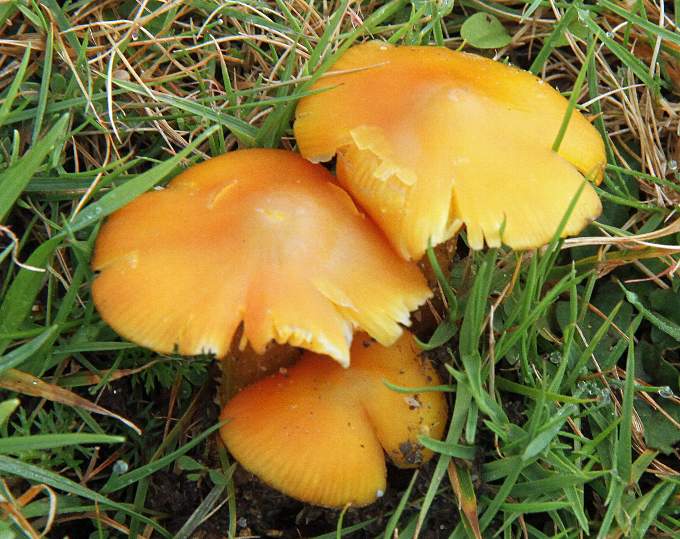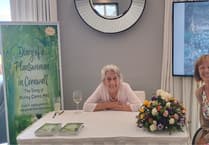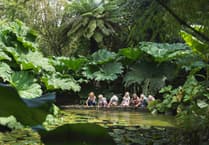We went to Minions for a walk around the moor and as well as being a sunny day it had the added attraction of lasagne and chips in the local pub. Well, it was my birthday a couple of weeks before, but first we had to walk.
The moorland around Minions was once the third highest copper producing area in Cornwall after it was first dug out of the ground in 1836. In fact ruins of several old mine buildings can be seen in every direction from the village and the granite used in the construction of many of the houses in Liskeard probably came from here as well.
Cattle, sheep and horses now live on the moor with Belted Galloways being the breed of most of the cattle and they are so used to people walking the moor they take little notice of them. They provide the dung for the cow pat mushrooms – Psilocybe cubensis – or the so called magic mushroom.
There were several different mushrooms growing on the grass and along the edges of pathways and the prettiest one and probably the most common, was the orange waxcap. I think there are over fifty different members of the Hygrocybe species and they probably acquired the waxcap name as they are waxy, or greasy to touch. They come in a variety of colours, from white to yellow, red and green.
A jackdaw was walking around inspecting the cow pats, something that can be seen quite often in fields where cattle graze but this black, grey headed member of the crow family had several white feathers on its wings making quite an unusual black and white display when it took off. I think what it was looking for were the dung beetles that live in the cow pats.
As everyone knows there is a group of granite stones protruding from the ground that roughly form the shape of three circles. These are The Hurlers Stone Circles and it has been estimated that there were around seventy stones originally – it is thought that many have been stolen over time.
The saying goes that these stones were village residents who were caught playing the game of Cornish Hurling on a Sunday and for their sins they were turned into stone. This happened some 2,000 years ago and the funny thing is you never hear of anyone playing the hurling game nowadays, do you?
There are hundreds of sheep around the village and although most of them tend to nibble at the grass all the time, some of the older ones are content to lie down in the sun and let the world go by. I couldn’t resist photographing one of these ‘layabouts’ that was watching the coming and goings at the village shop.




